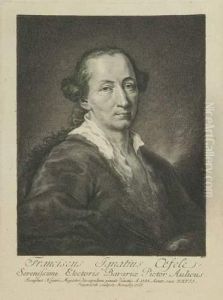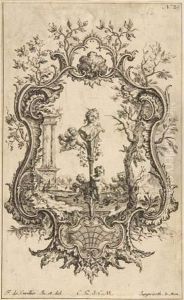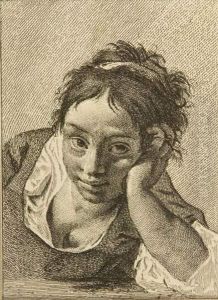Franz Xaver Jungwirth Paintings
Franz Xaver Jungwirth was an 18th-century German engraver and artist known primarily for his works in the Rococo style. Born in 1720, Jungwirth's early life and training are not extensively documented, but it is known that he was active during a period when Rococo art was at its peak in Europe, especially within the German-speaking regions. Jungwirth's oeuvre includes religious imagery, portraits, and decorative engravings that reflect the elaborate and ornamental qualities typical of the Rococo.
Jungwirth's artistic career was largely influenced by the cultural milieu of the Holy Roman Empire, where the Rococo style flourished among the nobility and the Catholic Church. He may have been connected to prominent art centers such as Augsburg or Vienna, where he would have had access to a range of patrons and artistic influences. His works often exhibit a fine attention to detail, a lightness of touch, and an elegance of line that were highly prized during his time.
Despite the relative obscurity of his biography, Jungwirth's contributions to the world of engraving and printmaking were part of a larger movement in the arts that emphasized elaborate decoration, playful themes, and intricate designs. Unlike some of his contemporaries who might have gained greater fame, Jungwirth's legacy is preserved in the collections of European art museums and libraries, where his prints continue to be studied and appreciated for their craftsmanship and historical value.
Franz Xaver Jungwirth passed away in 1790. The exact circumstances of his death are not well recorded, which is not unusual for artists of his era who did not reach the highest echelons of fame. Nevertheless, his artistic output remains a testament to the skill and aesthetic sensibilities of Rococo engravers and provides insight into the visual culture of the period.


